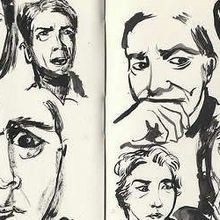Login
Subscribebrain mapping

The Scientist Speaks - Into the Mind of Human’s Best Friend: Using fMRI to Study Canine Cognition
Niki Spahich, PhD | Jul 23, 2021 | 1 min read
Gregory Berns discusses training dogs to undergo fMRI scans to better understand their brains.

Image of the Day: Neurons Unveiled
The Scientist and The Scientist Staff | Nov 2, 2017 | 1 min read
Researchers have succeeded in mapping the complex paths of 300 neurons in the mouse brain.

Mapping the Human Connectome
Tanya Lewis | Jul 20, 2016 | 3 min read
A new map of human cortex combines data from multiple imaging modalities and comprises 180 distinct regions.

Locating Language within the Brain
Tanya Lewis | Apr 27, 2016 | 3 min read
Researchers map the mental semantic systems of podcast listeners.

Perchance to Dream
Karen Zusi | Mar 1, 2016 | 4 min read
Mapping the dreaming brain through neuroimaging and studies of brain damage

Processing Faces
Jef Akst | Jan 21, 2016 | 1 min read
Other people’s faces are mapped onto our brains.

New Human Brain Language Map
Bob Grant | Jun 26, 2015 | 2 min read
Researchers find that Wernicke’s area, thought to be the seat of language comprehension in the human brain for more than a century, is not.

Casting a Small Net
Amanda B. Keener | Jun 10, 2015 | 1 min read
Scientists inject flexible, electronic mesh structures into mouse brains to track neurons in real time.

Brains in Action
Anna Azvolinsky | Nov 1, 2014 | 9 min read
An inspiring lecturer turned Marcus Raichle’s focus from music and history to science. Since then, he has pioneered the use of imaging to study how our brains function.
